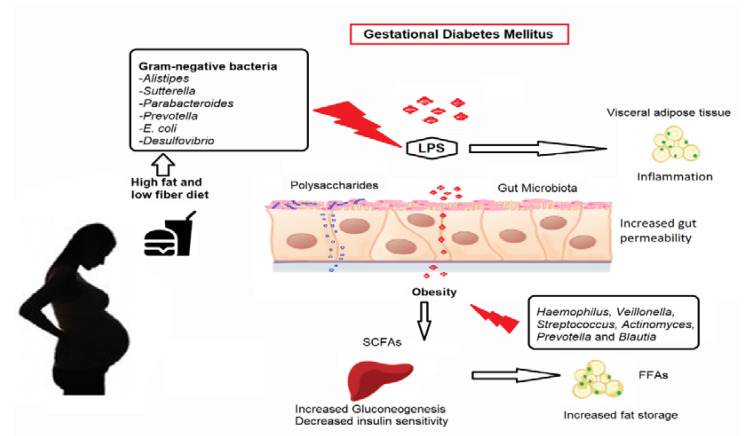Figure 2.
Potential mechanisms of pathobiont adherence and efflux through the gut epithelium in GDM women. LPS, lipopolysaccharides; FFAs, free fatty acids; SCFAs, short-chain fatty acids. Note: Images were obtained separately from Microsoft image search as licensed by the Creative Commons License (CC BY 2.0) and edited in Microsoft Paint. Poor adherence to recommended daily dietary intake, such as an increase in high-fat/low-fiber diet consumption, may have altered the makeup of the normal gut microbiota. It increased the Gram-negative pathobionts and SCFAs. The presence of Gram-negative pathobionts may have raised LPS biosynthesis levels. The increased gut permeability condition permits pathobionts, LPS, and SCFAs to move across the epithelial layer of the gut. The crossed LPS, SCFAs, and pathobionts entered the systemic circulation and reached peripheral tissues. Excessive SCFAs may have increased gluconeogenesis in the liver and elevated plasma glucose levels. In addition, SCFAs might have enhanced FFAs uptake and increased lipogenesis, causing excessive fat storage with the aid of other pathobionts in overweight pregnant women. LPS causes metabolic endotoxemia and inflammatory response activation, resulting in low-grade inflammation and adiposity. These mechanisms lead to glucose intolerance in GDM women.

